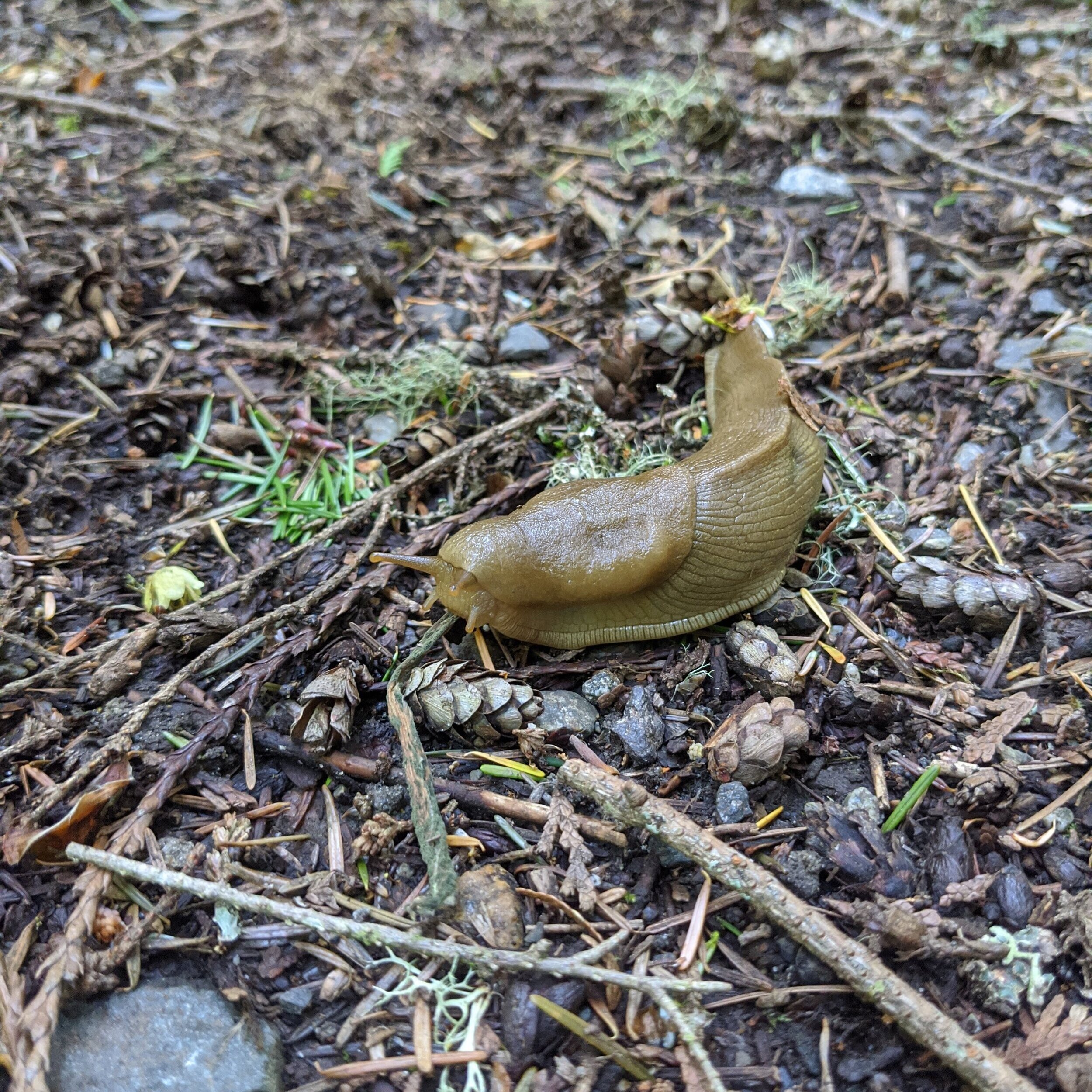Phylum Mollusca
/Banana Slug
What do snails, clams, and octopuses all have in common? As members of the phylum Mollusca, they all have soft bodies. “Mollusc” comes from a Latin word meaning “soft.” Mollusks can be found in many habitats all over the world. They can live in fresh water, salt water, or on land. Because of their soft body, they do require some moisture to survive. However, there are a few snails that have adaptations that allow them to survive in dry deserts. Mollusks produce a mucus (slime) to retain moisture and to help them move around. Mollusca is the second largest invertebrate (animals without a backbone) phylum, with a species count of around 100,000. Members of the phylum Mollusca that live in the ocean make up about one fifth of all named marine species.
Mollusca is a very diverse phylum. For most generalizations you can make about members of this phylum, there are often many exceptions. For example, most mollusks have a shell or a remnant of a shell. This is not true for many slugs and for octopuses though. There is also on class of Mollusks called Aplacophora, which literally means “without a shell.” These are all worm-like mollusks that live on the bottom of the ocean.
Most mollusks have three body sections: a head, a foot, and a mantle (body cavity). In the head, most mollusks have a radula and a simple brain. The radula is like a rough tongue that mollusks use to scrape and grind their food. (Clams do not have a radula). Mollusks have a simple nervous system that has one nerve chord for the foot and one for the mantle. They come together near the head in a ring shaped collection of nerves, their brain. The esophagus, where food travels from the mouth to the stomach, runs through the center of this brain ring. The mantle, or body cavity, contains their organs, including: their gills for breathing, heart(s), digestive system, and reproductive system. This is also the part of the body that makes the shell, if they have one. The foot is a muscle used for moving around and attaching themselves to surfaces. For squid, octopus, and cuttlefish, their “foot” is modified into tentacles that primarily help them eat. They use a siphon, or small tube shaped hole in their body, to move by pushing water through it.
Limpet
The largest class of mollusks is Gastropoda, which means “stomach foot.” This includes sails and slugs. They make up about 80% of all mollusks and are incredibly diverse. They come in all sorts of shapes, sizes, and colors. Common Gastropods around camp include: Banana Slugs, Moon Snails, Garden Snails, Nudibranchs (sea slugs with their gills on the outside of their body), and Limpets (dome-shaped marine snails).
Horse Clam
Another common class of mollusks we see is Bivalvia. Clams, Mussels, Oysters, and Scallops are all members of this class. Bivalves are known for having two shells that strongly hold together, protecting the soft body inside. These mollusks do not have a head or radula. Instead they use siphons to filter feed as they bring water into their body. Through doing this they also help clean the water around them. This does mean though that if there are toxins in the water, they will collect these toxins in their body. For the bivalves that dig, like clams, their foot is modified to help them dig into the sand. We can find Pacific Oysters, Bay Mussels, and many species of clams on our beach.
Squid eggs
Octopuses, squid, cuttlefish, and nautilus all belong to the class called Cephalopoda, meaning “head foot.” This class contains the smartest of the mollusks. Octopus have been known to solve puzzles and escape aquariums. Their radula is modified into tooth-like structures and their foot is modified into tentacles. Many can change color for camouflage and communication with members of their species. In squid and cuttlefish, their shell is a support structure just under the skin of their mantle. Octopus have lost their shell completely. The Puget Sound is home to the largest species of octopus, the Giant Pacific Octopus. Market Squid also frequent the Puget Sound. If you are lucky, you can find squid eggs on the beach at low tide.
Black Leather Chitons
One more type of mollusk you may be able to find on our beach is a chiton. Chitons are a lot like limpets but instead of one shell, it has eight shell plates. Their class name, Polyplacophora, means “many plates.” This gives them more flexibility. If they are removed from a surface, they can roll up into a ball to protect their soft body. They can be difficult to spot as many blend into the rocks and they look like a fossil.
Speaking of fossils, because of their shell, mollusks are abundant in the fossil records. This has helped scientists learn about the history of many mollusks.








